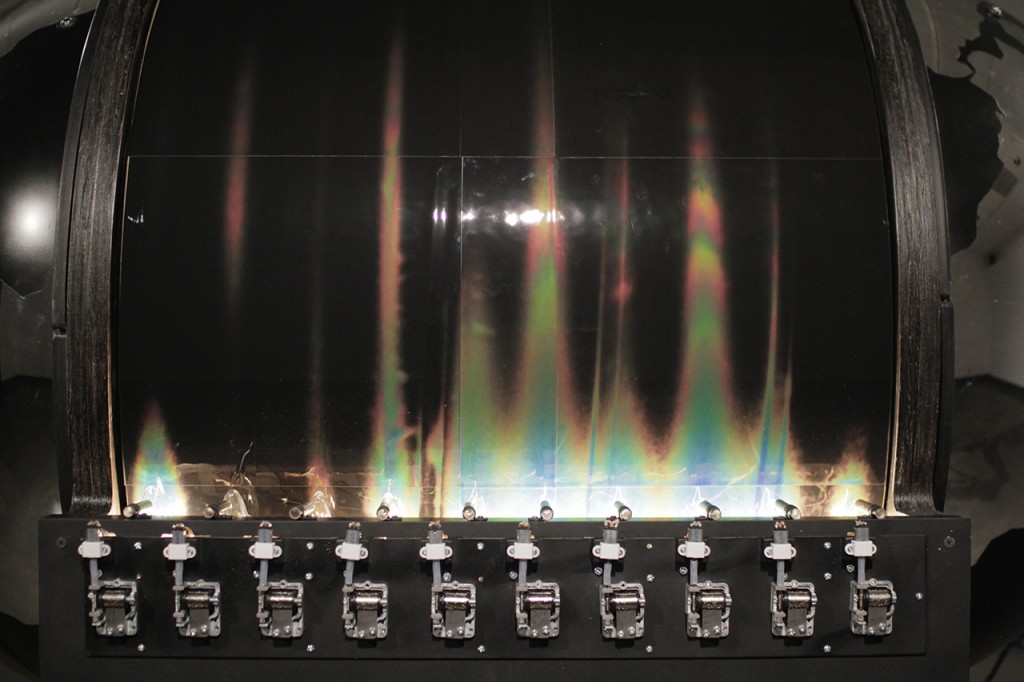Created in collaboration with Barry Moon, Thermal Image is a networked electromechanical sculpture, which seeks to draw attention to the idea of the Gross National Happiness index (GNH), an alternative to the Gross National Product, by presenting a physicalization of data scanned from twitter feeds from twenty cities around the globe.
Thermal Image focuses on emotocons as an indicator of national and regional mood and presents findings on a thermal display and through a shifting ambient soundscape. Each of ten light bulbs arrayed under a slowly turning drum covered in thermochromic film brightens or dims according to the frequency of positive and negative emotocons. Viewers can select different regions using ¼” phono jacks which connect different parts of the globe to the lightbulbs. Places around the globe were chosen mostly for the aesthetic qualities of their position on our hemispheres: New York, San Francisco, Houston, Mexico City, Lima, Rio, Buenos Aires, Winnipeg, Dakar, Cape Town, Cairo, Baghdad, Nagpur, Madrid, Berlin, Oulu, Kazan, Shanghai, Sydney, and Kuala Lumpur. Thermal Image builds on research done by Adam Kramer at the University of Oregon using positive and negative word frequency in social media as an indicator of GNH.
The thermochromic film changes colors according to the brightness of the bulbs, creating residual trails of colorful shifting mood data. If tweets from Sao Paulo are full of winking smiley faces, while tweets from Detroit are full of frowns, the difference is displayed in a hotter color stream coming off the Sao Paulo lightbulb. Each bulb also has a corresponding photo-sensor, which directly influences the speed at which 10 small music boxes play.
Thermal Image is intended to be a physicalized interface for the reception of data. One of the main motivations behind Thermal Image is a desire to find alternatives to screens and LEDs as methods for displaying the “ubiquitous” data of the information age. The intention is that the shifting colors of the thermochromic film, which correlates to warm and cold, will form a visceral analogy for the atmospheric effect of collective mood. The piece is slow and meditative, slowing viewers down and tuning them in to intangible emotional forces that are a crucial aspect of the psychology of groups. Thermal Image was funded by a project grant from the Arizona Commission on the Arts.


